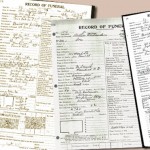Using military records for genealogy can be a challenge to the genealogist. This article discusses what records are available and how to use them. If you have relatives that served in the military or may have, this article will help you get started.
Some military records have become lost or, in earlier times, were not kept very well. But if you find those military records for your ancestor(s), they can be filled with a wealth of information. To search for military records, start at any National Archives branch and go from there. You can visit the website for the National Archives to find a list of local branches. Before you start any search in military records, find out what war(s) your ancestor(s) might have been in. You can find a list of wars that the United States participated in and what years they occurred by using your favorite search engine. Check your ancestor(s) age to see what war they might have been eligible to fight in. Remember, men went to war at an early age in the earlier wars. Now you are ready to begin your search for those military records.[box] It was common for a person to muster in for a few months, muster out, and then muster back in to the military. In many cases, “mustering out” was not necessarily the end of service. [/box]
What records are available? We all know the major wars: Revolutionary War, Civil War, World War I, and World War II but records exist for such wars as the War of 1812 and any state militias. Records are available at the state level besides the national level so be sure to check all state websites where your ancestor(s) might have lived. Records can include when the person mustered in or mustered out, when a widow filed for a pension, when the person filed for a pension, any land the person might of received for serving in the military, burial records for military personnel, and military census records.
Remember that most Civil War records are divided into Confederate and Union. So try to make sure you know which side your ancestor fought on. Muster rolls are for when a person enlisted or mustered out of the military. It was common for a person to muster in for a few months, muster out, and then muster back in to the military. Don’t think just because you found where your ancestor(s) mustered out that he no longer served, check further months and years before completing their military history.
Veteran’s benefits are such things as pension records, bounty-land records, and widow’s pensions. A pension record will usually have when the person enlisted, what unit they served with, and when they mustered out. It might also include any family members. Bounty-land records were authorized by Congress to substitute for wages for the service man. They received 100 to 1,000 acres depending on the soldier’s rank. A widow’s pension was filed after the soldier passed away. This usually lists the husband’s name, any living children, when the soldier died, place of residence, and marriage records. Widows had to provide this marriage certificate and a death certificate, so you can see how important a widow’s pension application can be.
There are many National Cemeteries in the United States where our military are buried. If you believe your ancestor was buried at a National Cemetery, visit the National Cemetery website. In recent years, most of the burials at these cemeteries have been put online.
There were two specific military censuses taken in the United States – 1840 and 1890. The 1840 United States census asked for all living pensioners of the Revolutionary War and any other military service. This lists the pensioner’s name, age, and place of residence. The 1890 United States census provided the pensioner’s name, rank, company, regiment, dates of enlistment and discharge, length of service, where living at the time of the census, and any disabilities incurred while in the military. Unfortunately, most of this census for the states of Alabama through Kansas is missing. The 1900, 1910, and 1920 United Sates Federal censuses also ask for military service of anyone in the household.
As you can see by the above, different information is available for different military personnel. It is well worth the time and effort it takes to either search for this information yourself or request a search by an entity such as the National Archives. The National Archives only searches the index at first and does require a fee if they do the research for you and you must provide the branch of service and the state from where the solider served. Once you have the index searched, you will use NATF Form 80 to order the actual pension records. A copy of the NATF Form 80 can be obtained by visiting the National Archives website.
Keep in mind that there are thousands upon thousands of military records that are not published online. The National Archives in Washington D.C. holds an enormous volume of these records as do several smaller depositories and libraries. Luckily there are scores of people that are very skilled at military service research who are active on blogs, at conventions and working at these facilities. If you’re at a loss to locate a particular type of record there are many, many people out there that can tell you where these records can be found.
This is just a start on using Military Records for genealogy. Once you have obtained these records, you can develop a timeline for your ancestor and his family. You might also find more family information that you didn’t have before. Give these records a try and you will never pass them up for any ancestor. Good luck and happy hunting.


